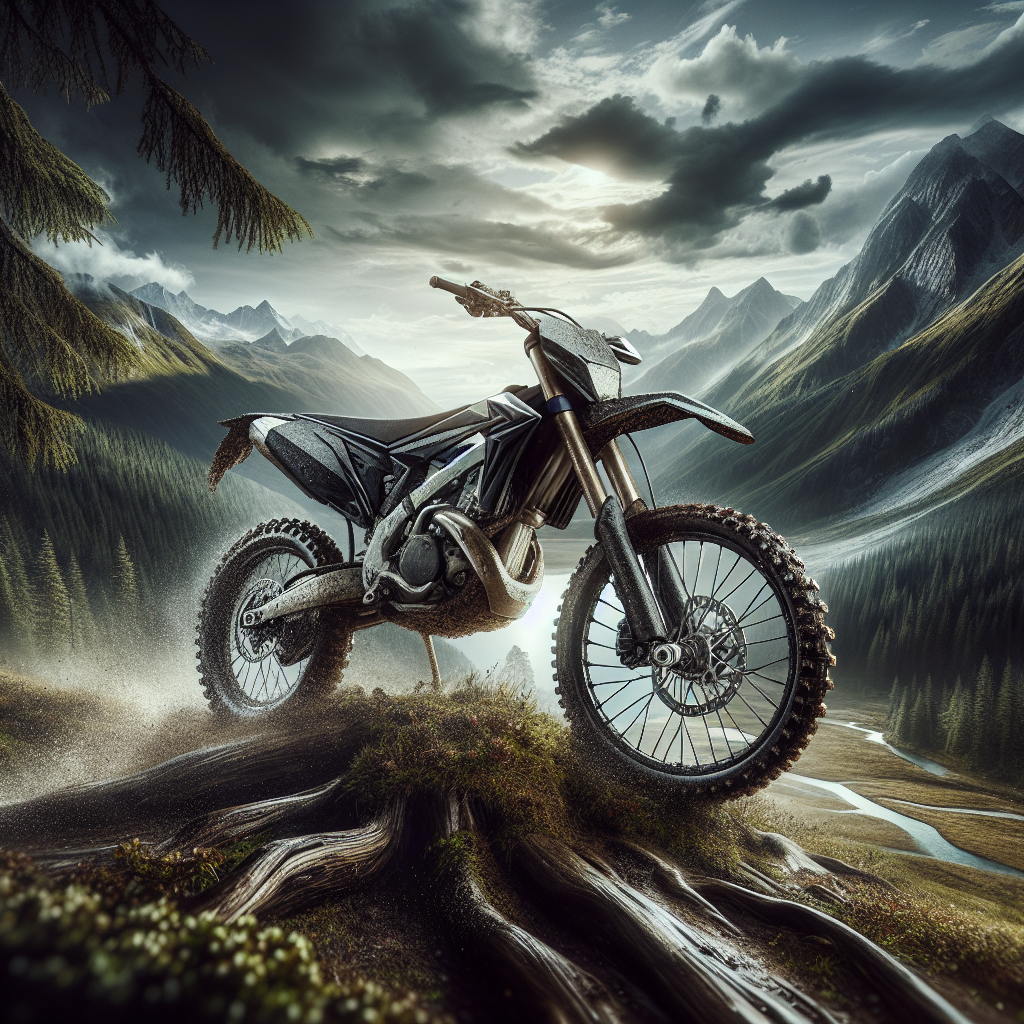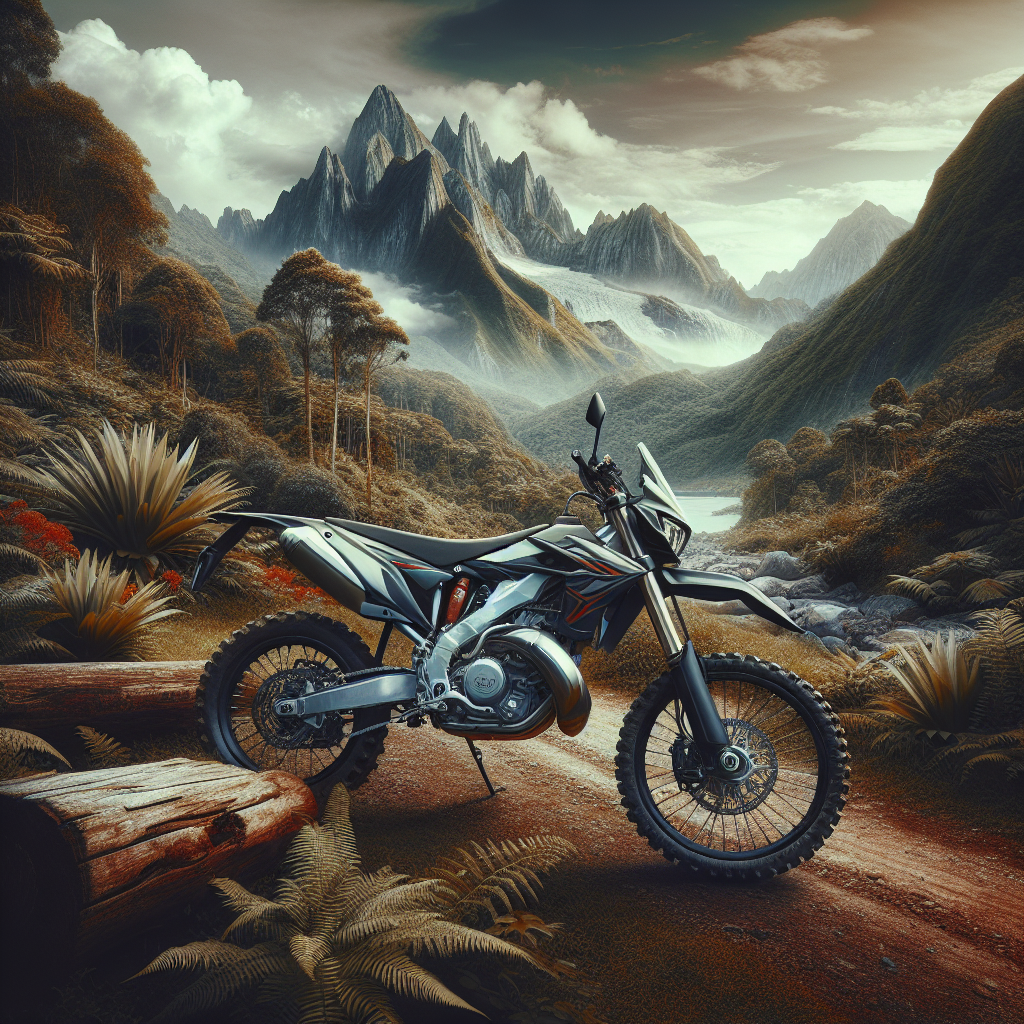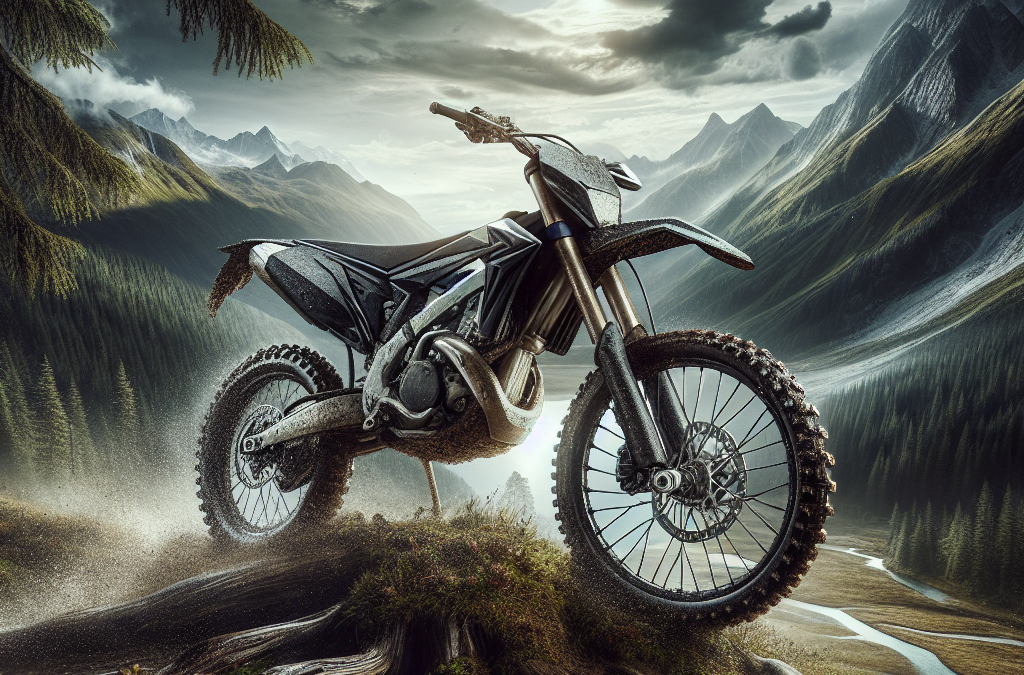If you’ve ever wondered about the thrill and exhilaration that comes with dirt biking in the wild, “The Ultimate Guide to Dirt Biking in the Wild” is just for you. This comprehensive guide provides you with everything you need to know about tackling rough terrains, understanding your bike and perfecting your adventure skills. Filled with expert tips and insights, this guide aims to inspire and instill confidence in you as it leads you on an exciting journey through the uncharted territories of dirt biking.
Understanding the Basics of Dirt Biking
Dirt biking, as the name suggests, is an off-road motorcycle activity. It’s not just a leisure activity but also a recognized competitive sport. It’s called dirt biking because it involves riding specially designed bikes on unpaved surfaces like dirt, gravel, mud, sand, and rocky terrains.
What is dirt biking?
Dirt biking is a thrilling activity that requires core strength, quick reactions, and great endurance. It’s exhilarating, challenging, and can pump massive adrenaline, making it a favorite form of sport for adventure enthusiasts.
Different types of dirt bikes
There are several types of dirt bikes. First are motocross bikes, designed specifically for racing on closed, twisty tracks with jumps and obstacles. Then, there are trail bikes, also known as enduro bikes, designed for endurance tests usually conducted on much more extensive and open terrains. Finally, dual-sport bikes, also referred to as adventure bikes, are a hybrid of street-legal bikes and off-road-enduro bikes, suitable for both on-road and off-road biking.
Key features of a dirt bike
The distinctive features of a dirt bike include a lightweight frame, a high ground clearance, a single-cylinder, high-performance engine, strong and deep-treaded tires, and long suspension travel to absorb the shocks on off-road trails. They also lack the amenities of a regular street bike, like electronic gadgets, to reduce weight and complexity.
Choosing the Right Dirt Bike for You
Picking the right dirt bike is vital to your biking experience. There are a few factors you need to consider before making a decision.
Assessing your skill level
Are you a beginner, intermediate, or an expert rider? Your riding skills and experience level dictate what kind of dirt bike you should choose. Starting with a less powerful bike is ideal if you are a novice, and you can gradually move to more powerful ones as you improve your skills.
Considering your height and weight
Your size matters when choosing a dirt bike. You need to feel comfortable and in control of the bike. The bike’s seat height, the distance from the seat to the footpeg, and the handlebars should all be convenient for you.
Selecting the appropriate engine size
Engine sizes of dirt bikes could range from as small as 50cc to as large as 650cc. Larger engines are more powerful but are also heavier and harder to handle. Pick an engine size that matches your skill level and the terrain you’ll be riding.
Understanding the difference between 2-stroke and 4-stroke engines
2-stroke engines are lighter, faster, and cheaper, ideal for racing. But they require more maintenance. 4-stroke engines, on the other hand, are heavier, but they’re easier to manage, making it a good choice for trail rides.

Essential Gear and Equipment
Safety should be your priority when you go dirt biking. The right gear can reduce the risk of injury significantly.
Helmet and protective wear
First and foremost is your helmet. Choose a full-face helmet that fits well. Body armor with a chest protector and spine guard can protect your body from potential injuries. Knee and elbow guards are also useful protective gear.
Proper dirt biking boots
Dirt biking boots are designed to protect your feet and ankles while giving you better grip and control. Look for boots that have a sturdy construction, offer ample ankle support and have a gripping sole for traction.
Gloves for grip and protection
Gloves can protect your hands from blisters, cuts, and abrasions. They also offer better grip and control over the bike’s handlebars.
Backpack essentials for wilderness biking
Carry a lightweight backpack filled with essential tools and items like basic repair kits, snacks, water, first aid kit, spare tube, and a map or GPS.
Learning Basic Dirt Biking Skills
To ride a dirt bike, you need to master certain basic skills.
Mastering throttle control
Throttle control is fundamental as it manages the speed and power of your bike. It’s crucial to familiarize yourself with your bike and understand how much throttle is required in different scenarios.
Working on your balance
Balance is paramount when riding on uneven terrains. Practice standing up on the bike while riding to improve your balance.
Importance of body positioning
Your body position affects your balance, control, and endurance on the bike. Learn how to position yourself depending on whether you’re braking, turning, climbing, or descending.
Practicing braking and turning techniques
Braking and turning demand skill and precision. Practice applying brakes smoothly to prevent skidding, remember to use both front and rear brakes. Lean into the turn, shift your weight and practice controlled throttle while turning.

Finding the Best Locations for Dirt Biking
Finding the right place to ride your dirt bike can greatly enhance your biking experience.
Looking for legal and suitable places
Please make sure the area you choose to ride is legally approved for dirt biking. Riding in unauthorized areas can lead to penalties and cause damage to the environment.
Researching local dirt biking trails
Your local area might have several designated dirt biking trails. Do some research, ask around, or use dirt biking forums to find out more about local trails, their difficulties, and rules.
Understanding the impact of weather conditions
Weather plays a vital role in dirt biking. Wet weather might make the trail slippery and muddy while dry conditions could make it sandy and loose.
Getting local insights and recommendations
If you’re new to an area, consider getting local insights and recommendations. Local bikers can provide valuable information on the best trails, their conditions, and regulations.
Navigating the Wilderness
When you’re out in the wilderness, it’s essential to know how to navigate your way.
Reading a map or GPS
Learn to read a map or use a GPS. It’s crucial for not getting lost and finding your way back if you do wander off the path.
Staying on the trail
Make sure always to stay on the designated trail. Veering off can damage the environment, disturb wildlife, and increase the chance of getting lost.
Managing tricky terrain
Prepare yourself to handle various types of terrains – steep inclines, rocky trails, muddy patches, etc. Remember, each terrain requires a different set of skills and techniques.
Dealing with wildlife
If you encounter wildlife, slow down, give them space, and never try to startle or feed them. Be aware of any potential threat or dangers in the area.
Responsible Wild Biking
Biking in the wilderness comes with its responsibilities. It’s important to respect your surroundings.
Being mindful of the environment
Avoid skidding, riding on vegetation, or creating new trails. These actions can lead to soil erosion and habitat destruction.
Respecting private property and trail rules
Adhere to all trail rules and never trespass on private property. Remember to close any gates you open and respect other trail users.
Pack out what you pack in
Leave no trace behind. Dispose of your garbage appropriately and bring back everything you carried in.
Maintenance of Bikes in the Wild
It would be a bummer if your bike broke down in the middle of nowhere. Regular maintenance can prevent such instances.
Regular bike checks
Regular bike checks ensure your bike is in good condition. Check the engine, brakes, tyres, and lights before every ride.
Carrying essential repair tools
Always carry a basic repair kit with you, which includes tools like a multipurpose tool, tyre levers, spare tubes, and a mini pump.
Troubleshooting common dirt bike problems
Understand how to troubleshoot common dirt bike problems like a flat tire, engine overheating, or the bike not starting. It might save you from getting stranded out in the wild.
Safety Measures and Emergency Preparedness
Be prepared for emergencies. A well thought out safety plan can help you handle unexpected situations better.
Biking with a companion
Never bike alone in the wilderness. Having a companion can come handy if you run into trouble.
Carrying adequate food and water
Carry enough food and water to last you through the ride and a bit more for emergencies.
Making a safety and emergency plan
Have a safety plan. Inform someone of your biking plan, including your route and expected return time.
The importance of a first aid kit
Always carry a first aid kit. It should include basic medical supplies like bandages, antiseptic wipes, tweezers, pain relievers, and personal medication.
Improving your Dirt Biking Skills
Once you’ve mastered basic skills, look to improve. Upgrading your skills will help you handle challenging trails and enhance your biking experience.
Learning advanced dirt biking techniques
Advanced techniques like jump skills, tight cornering, and aggressive braking can elevate your biking skills.
Attending dirt biking workshops and clinics
Joining biking workshops or attending clinics can provide professional training and guidance to improve your skills.
Training on different terrain types
Training on various terrain types can make you a versatile biker and prepare you to handle most biking trails effectively. Practice on sand, mud, rocks, and steep inclines.
As you get started with your dirt biking adventure, remember to enjoy the process. Every biker struggles initially. Don’t be disheartened. Keep riding, keep practicing, and you’ll see yourself improving over time.

